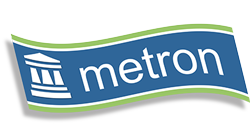Here’s hoping
that everyone has had an enjoyable holiday season and is looking forward to the
start of a new year. Happy New Year to
everyone from all the team at Metron.
I’m not a great one for New Year resolutions, so I won’t offer any of those. There are things that I know I should be getting around to – my conscience regularly tells me I need to update my LinkedIn profile, but this is just part of an on-going ‘to do’ list, whatever the time of year.
I’m not a great one for New Year resolutions, so I won’t offer any of those. There are things that I know I should be getting around to – my conscience regularly tells me I need to update my LinkedIn profile, but this is just part of an on-going ‘to do’ list, whatever the time of year.
I’ll leave
others to make the big predictions about what the big themes will be in
IT. We’ve probably all seen plenty of
information about this anyway. Cloud is
getting bigger and bigger such that it isn’t something new or special, it’s
just how we do things. Software as a Service is more and more part of our day
to day life – many things that used to be internal to Metron such as email and
CRM are now externally hosted. The same
is happening elsewhere, with what are considered critical applications now
being put in the Cloud by some organizations.
Big data is
going to be, well, BIG, so storage will continue to spread faster than
anything. Note to self: must learn what
comes after ‘petabyte’, as this already seems to be a common capacity
term. Are exabytes, zettabytes,
yottabytes and so on real terms, or is someone having fun at my expense? Time will tell, all too quickly. For those of us involved in capacity
management, we need to find out sooner rather than later.
I guess our
area at Metron is capacity management, and so I should be most concerned with
that. Here are three things I would like
to see in the New Year. They are
randomly picked personal items – there are many others I could have
selected. I’d be interested to hear your alternatives –
at least for the capacity management items(J):
-
As
we still battle to come out of the recession, I’d like to see every cent valued
by organizations. Too often I hear that
‘we don’t need capacity management because servers/virtual servers/Cloud
resources are cheap’ or ‘we don’t need capacity management because we’ve bought
enough resource to see us through the next 3 years’ – the latter being a
genuine quote from a Deputy CIO to me.
Nothing is cheap if you buy more than you need. The cost is not the unit cost of the item,
it’s what value that money could have bought your business used elsewhere.
-
I’d
like to see the Capacity Management Group (www.cmg.org)
resurgent. Capacity management should be
seen as vital to cost effective IT service delivery, too often it is not. CMG offers a superb forum for exchange of
ideas and free education to enable you to allow capacity management achieve its
potential for your organization.
Restrictions on travel and an increasing internal focus by management in
response to the recession have seen attendance at conferences such as CMG
diminish due to their ‘cost’, rather than be considered for their ‘value’. Developments in the IT world such as
virtualization and Cloud will make it ever easier to spend money ineffectively
on IT infrastructure – capacity management offers a route to avoid that. Participating in CMG can help any
organization realize that benefit.
-
I’d
like to see the New York Jets and Sheffield Wednesday Football Club conquer all
before them...... Oh well, you can’t have
everything.
By all means
send me your capacity management wishes for the New Year and I will pass them
on through our blog. In the meantime,
have a happy, healthy and successful 2013.
Andrew
Smith
Chief
Sales & Marketing Officer




